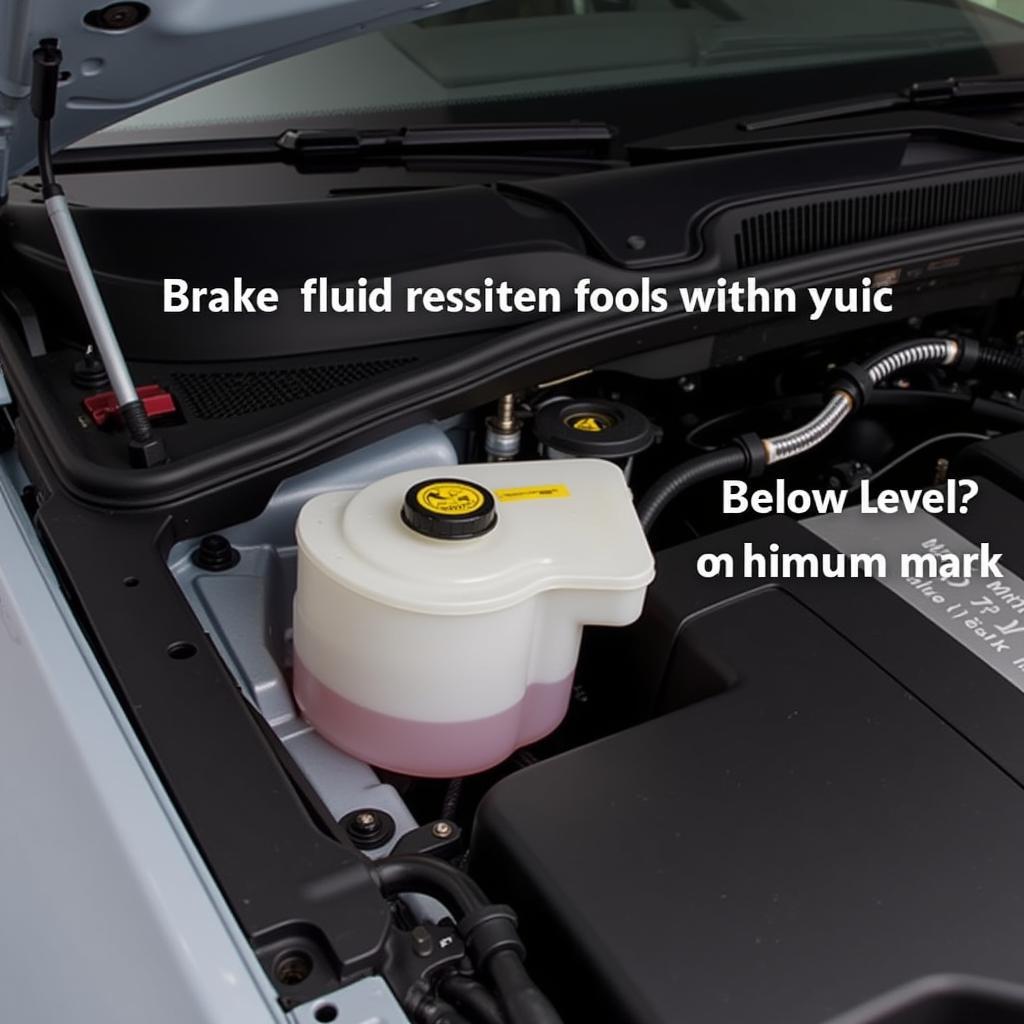That ominous red brake warning light glaring from your dashboard can be a real heart-stopper. It’s a signal that something isn’t right with your braking system, and ignoring it could have serious consequences. This article will guide you through the common causes of a red main brake warning light, diagnostic steps you can take, and potential solutions, including remote software programming and installation options.
Understanding the Red Brake Warning Light
The red brake warning light is part of your car’s safety system, designed to alert you to potential issues with the brakes. Unlike the amber brake light, which often signifies low brake fluid, the red light indicates a more serious problem that requires immediate attention. This could range from low brake fluid to a malfunction in the electronic braking system or even a mechanical failure. Driving with a red brake warning light illuminated is extremely dangerous and should be avoided.
Common Causes of a Red Brake Warning Light
Several issues can trigger the red brake warning light. Understanding these can help you narrow down the potential problem and seek appropriate assistance.
- Low Brake Fluid: This is the most common culprit. A leak in the brake lines or worn-out brake pads can cause the fluid level to drop, activating the warning light.
- Parking Brake Engaged: Sometimes, the simplest explanation is the right one. If your parking brake is even slightly engaged, the warning light might come on.
- Faulty Brake Sensor: Modern vehicles have sensors that monitor various brake components. A malfunctioning sensor can trigger the warning light even if there’s no actual problem with the brakes.
- ABS Issue: Problems with the Anti-lock Braking System (ABS), such as a faulty sensor or module, can illuminate the red brake light.
- Mechanical Failure: Issues like a damaged master cylinder, brake caliper, or brake lines can also activate the warning light.
Diagnosing the Problem
While some checks can be done visually, like checking the brake fluid level, a proper diagnosis often requires specialized equipment and expertise.
- Check the Parking Brake: Ensure the parking brake is fully released.
- Inspect Brake Fluid Level: Locate the brake fluid reservoir and check the fluid level. It should be between the minimum and maximum markers.
- Visual Inspection: Look for any visible leaks in the brake lines or signs of wear on the brake pads.
- Consult a Professional: If you can’t identify the problem through visual inspection or if the brake fluid is low, it’s crucial to consult a qualified technician.
 Checking Brake Fluid Level
Checking Brake Fluid Level
Modern vehicles often require electronic diagnostic scans to pinpoint the exact cause of the warning light. This involves connecting a diagnostic tool to the vehicle’s onboard computer to read fault codes.
Remote Diagnostics and Software Solutions
Advancements in automotive technology have paved the way for remote diagnostics and software solutions. This allows technicians to access a vehicle’s computer remotely, diagnose the problem, and even install software updates or reprogram modules to fix certain issues without needing physical access to the car. This can be a significant time and cost saver, especially for software-related brake problems.
“Remote diagnostics and software programming have revolutionized how we approach car repairs,” says John Davis, Senior Automotive Diagnostic Engineer at AutoTech Solutions. “We can now address many brake system issues remotely, providing faster and more convenient solutions for our customers.”
Resolving the Issue
The solution to a red brake warning light depends entirely on the underlying cause. It could be as simple as topping up the brake fluid or as complex as replacing a major brake component.
- Low Brake Fluid: Add the correct type of brake fluid to the reservoir. If the fluid level drops again quickly, there’s likely a leak that needs to be addressed immediately.
- Faulty Sensor: Replacing the faulty sensor will usually resolve the issue.
- ABS Problems: Depending on the specific problem, this might involve replacing a sensor, module, or other ABS components.
- Mechanical Failures: Addressing mechanical failures usually requires replacing the damaged part, such as the master cylinder, brake caliper, or brake lines.
“Never underestimate the importance of regular brake maintenance,” advises Maria Sanchez, Lead Technician at Brake Experts Inc. “Routine checks and timely repairs can prevent many brake problems, including those that trigger the red warning light.”
Conclusion
A red main brake warning light is a serious indicator of a potential problem with your braking system. Ignoring it can lead to dangerous driving conditions and costly repairs. By understanding the common causes, taking appropriate diagnostic steps, and seeking professional help when needed, you can ensure your braking system remains in optimal condition, keeping you safe on the road. Don’t delay addressing this critical warning – your safety depends on it.
FAQ
- Can I drive with the red brake warning light on? No, it’s extremely dangerous to drive with the red brake warning light illuminated. You should stop driving immediately and have the problem diagnosed.
- What’s the difference between the red and amber brake warning lights? The red light indicates a serious problem requiring immediate attention, while the amber light often signifies low brake fluid or a potential issue with the ABS.
- Can I top up the brake fluid myself? Yes, you can add brake fluid, but ensure you use the correct type specified in your vehicle’s owner’s manual. If the fluid level drops quickly again, have a mechanic check for leaks.
- How often should I have my brakes checked? It’s recommended to have your brakes inspected at least once a year or as specified in your vehicle’s maintenance schedule.
- What is remote diagnostic software? Remote diagnostic software allows technicians to access your car’s computer remotely to diagnose problems and potentially fix them through software updates or reprogramming.
- Is remote software programming safe? Yes, remote software programming, when performed by qualified technicians using approved software and equipment, is a safe and effective method for addressing certain car problems.
- How much does it cost to fix a red brake warning light issue? The cost depends on the underlying cause and can range from a simple fluid top-up to more expensive repairs like replacing major brake components.

